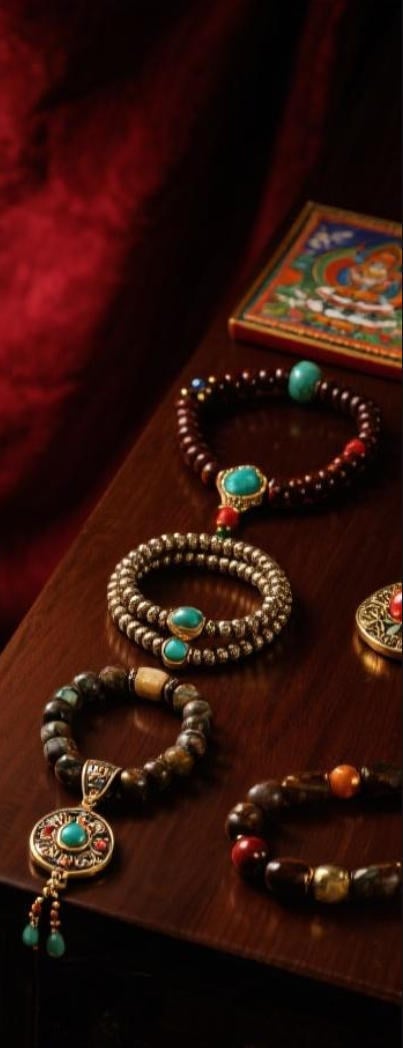
Within the meticulous design of Tibetan Buddhism are found two profound relics: the thangka and the bodhi bead. Separately, in personalized means, provide access to spiritual knowledge. The thangka, an elaborate depiction, features deities, cosmic designs, or scriptural scenes, supporting mindfulness exercises.
In contrast, the bodhi bead, often crafted from exquisite rocks, wood, pips, or bony material, is a tangible reminder of Buddha's awakening under the bodhi tree. Touching the beads encourages spiritual concentration.
- In unison, the thangka and the bodhi bead express the journey towards enlightenment. They offer a tangible link to the age-old knowledge of Tibetan Buddhism.
Chronicles Inscribed in Camel Ossicles
Across the sands of time, old treasures whisper tales about a world long gone. These are not gilded objects produced by suppressed empires, but modest camel bones carved with figures that safeguard the mysteries of a bygone cycle. All elements preserve the echo arising from a life lived, a journey traveled, and a connection to the primeval wisdom within which envelops us all.
- Such objects
- Relics
- Symbolize
Interpreting the Visual Narratives of Thangka
Tangkas are radiant paintings on canvas, meticulously crafted by Tibetan artists to depict spiritual figures and scenes from Buddhist writings. Each detail within a thangka is laden with symbolism, forming a complex tapestry of visual narratives that guide the viewer on a contemplative journey. The hues used in thangkas are not merely aesthetic choices but carry essential connotations, representing different aspects of the Buddhist doctrine. From the stoic figures to the intricate layouts, thangkas offer a window into the rich world of Tibetan Buddhism, inviting us to consider upon its understanding.
- Traditional thangka art often depicts key Buddhist figures such as Buddha Shakyamuni, Bodhisattvas like Avalokiteshvara and Manjushri, and enlightened beings from various schools of Tibetan Buddhism.
- Amidst these representations lies a wealth of awareness that can be unlocked by those who study the symbolic language of thangkas.
Enlightened One's Path to Enlightenment: Embodied in Beads and Bone
Upon the winding way to awakening, the Buddha exercised insignia imbued with profound value. Each bead and bone held within them the essence of his philosophy, expressing glimpses into the matrix of reality. By way of their appearance, the Buddha shared profound insights that surpass the realm of tangible perception.
From chosen reflective beads, crafted from special materials, emerged vibrations that aligned with the subtle powers within. The composition of a life form, meticulously transformed into amulets, served as tangible emblems of the impermanence essential to all beings.
Thangkas: Windows into Himalayan Spirituality
Thangkas sacred paintings on cloth serve as expressive representations of Himalayan spirituality. These intricate works of art, meticulously created with precise brushstrokes, depict a vast array upon Buddhist deities, mandalas, and scenes from revered scriptures. Each thangka is a meditative instrument for meditation and contemplation, offering understanding into the refined teachings of Buddhism.
- They are often used in ritual ceremonies within
- transcending states of spiritual clarity.
- Thangkas exist not merely decorative elements but rather portals into the rich and spellbinding world of Himalayan spiritual traditions.
Bodhi Beads: A Journey Through Mindfulness and Compassion
Each orb on a bodhi bead mala whispers tales of ancient wisdom, guiding us on a odyssey through the tranquil waters of mindfulness. As we clutch these intricately created beads, our fingers trace the contours of unique one, anchoring our focus in the present moment. The gentle mass of the beads against our palms serves as a tangible reminder to take a breath, fostering a sense of calm.
- At each bead that passes between our fingers, we grow compassion, extending it first to ourselves and then outward to the world.
- Eastern religions teaches us that mindfulness is a art form that requires patience and devotion.
Using the rhythmic repetition of mantra or simply the mindful tallying of the beads, we break free from the relentless chatter of the mind.
The practice involving bodhi beads is a refined invitation to re-engage our connection with ourselves and the world around us.
Manifesting Intent: Building Camel Bone Bracelets for Sacred Development
Purpose functions as an influential power in our lives, shaping our experiences and guiding us towards our foreordained route. When we combine this intention with the primordial insights of crafting a camel bone bracelet, we create a potent synergy that can enhance our spiritual growth.Camel bone represents sacred significance, representing vitality. Its natural beauty and enduring grace serve as a constant reminder of the divine force within each of us.Once bones are chosen with care, flow affirmations into the bracelet. With every knot or bind, we integrate our hopes, dreams, and aspirations for spiritual evolution. This act of creation becomes a reflective routine, synchronizing us with our inner wisdom and guiding us on a quest for enlightenment.- Observe how the shade and grain complement your purpose.
- Feel the energy flowing through your hands and into the creation.
- Charge the completed bracelet under the moonlight or sunlight to amplify its energetic properties.
Camel Bone's Role in Buddhist Iconography
In the rich tapestry encircling Buddhist tradition, artifacts often hold profound symbolic meaning. Within these varied objects, camel bone stands out as a unusual and captivating element. Among history, this material has been exploited in the crafting of various Buddhist artifacts, each imbued with specific meanings.
- Perceived as a symbol of resilience and strength due to the camel's ability to withstand in harsh environments, camel bone often reflects spiritual fortitude.
- Complementarily, the color and texture relative to camel bone are believed to some to hold auspicious connotations, representing purity and serenity.
Consequently, camel bone has become a valuable part of Buddhist heritage, serving as a tangible relation to the profound teachings involved in this ancient faith.
Thangka Art: Weaving Tales of Divinity
Within the ethereal realm of Tibetan Buddhism, Thangka paintings emerge as sacred portals to enlightenment. These exquisite works, meticulously crafted by skilled artists known as thangkapa, depict a myriad with a spectrum of vibrant deities, celestial beings, and mythical creatures. Each brushstroke imbues profound spiritual significance, narrating ancient tales and philosophical concepts.
- Offering a vast anthology of Buddhist iconography, Thangkas serve as both devotional objects and instructional tools. Reverent practitioners gaze upon these paintings during rituals and meditations, seeking to attain spiritual wisdom.
- Adorned with intricate details decorated with numerous vibrant hues, Thangkas are considered windows into the divine. All painting acts as a symbolic representation of the Deity's teachings and the path to liberation.
Through their forceful imagery and symbolism, Thangka paintings offer a glimpse into the rich philosophical traditions of Tibet. They are a testament to the enduring skill of Tibetan art and its profound ability to awakening.
Embracing the Duality: Thangkas and the Cycle of Life and Death
Thangkas, the richly painted Tibetan scrolls, present a deep contemplation on the ephemeral character of Exclusive bracelet existence. Each intricate image depicts deities and beings engaged in the ongoing course of life and death, a collection of birth, growth, impermanence, and rebirth. The artists skillfully combine these concepts within the thangka's setting, highlighting the harmony of all things. Through vivid emblems, they invite us to speculate on our own existence. The cycle revolves, a flow of coming and going, accentuating the preciousness of each moment. By embracing this duality, thangkas teach us to welcome the beauty in both life's joys and sorrows.Links of Dedication: The Significance of Bracelets in Buddhist Practice
In the intricate tapestry of Buddhist practice, seemingly unassuming objects often hold profound meaning. Among these are bracelets, which serve as tangible representations of devotion and commitment to the way of Buddha. Worn on the wrist, a bracelet works as a constant reminder of one's aspirations and aims. It can express the impermanence of life, inducing practitioners to remain present in the present moment. Some bracelets may hold sacred etchings, such as mantras or the names of Buddhas, which are acknowledged to elicit positive energy and preservation. Others are sometimes made from matter with spiritual significance, like sandalwood or lotus seeds, improving the bracelet's force. Ultimately, the significance of a Buddhist bracelet stems far beyond its physical form. It becomes a powerful tool for quietude, a trigger to live in harmony with the teachings of Buddha, and a fount of one's unwavering devotion.